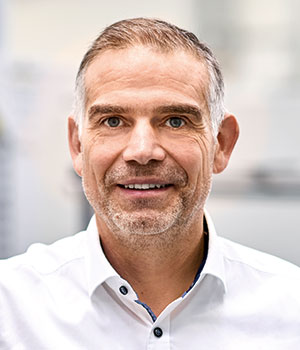Do customer requirements differ between the markets in Europe, Asia and the USA?
Ulrich Engenhardt: You don’t have this customer and that market. I don’t think you can make a generalised distinction between markets and regions. Even in Asia and supposedly small markets such as Vietnam, there are companies in the food and beverage sector, for example, such as Unilever and Nestlé that have global standards. Our worldwide value proposition is exactly what these companies are looking for. However, there are other customers in countries such as India with its hourly wage of just 2.50 dollars that have a different value chain to Europe. Our task in this case is to find specific, customer-centric solutions there, too.
What exactly do you mean when you talk about customer-centric solutions?
Ulrich Engenhardt: As I see it, such solutions involve taking a very open approach to issues and also treating customers with a certain amount of humility. Not saying we already know what the customer needs, but really listening and then asking in the form of a nuanced value proposition what the next step for them might be. Not everyone can immediately achieve maximum production efficiency for every machine. You then need to listen very carefully, but also identify the next step that could improve efficiency. So it’s a case of giving customers some room for manoeuvre when showing them what solutions are available. Many of them are now very grateful for this partnership- based approach, because no-one has all the answers.
What are the mistakes to be avoided in customer relationships?
Thomas Basler: The most important thing is not to ask too much of customers. When we started the Eplan Data Standard (EDS) with Eplan, we wanted to sell the data to our customers, but some of them really didn’t want that. It was too much for them. We can’t tell electrical design engineers they need to start by recreating their entire database from scratch. That’s not on. It was a lesson we had to learn.
And what do you now do better?
Thomas Basler: We show them how things work – in practice – here at our new Alexander Bürkle panel solutions plant in Malterdingen. When customers pay us a visit, we go through the entire value creation process with them step by step. We start with engineering using Eplan and then move on to production. Customers see how we take data from a digital twin and then use it with automation technology from Rittal to cut cable ducts to size, machine mounting plates and housings, process wires and then install these wires in the Rittal enclosure with the help of Eplan Smart Wiring software. When customers see this in practice at first hand, they say they want to work in exactly the same way.
And what is the right solution for customers?
Ulrich Engenhardt: Our customers always decide that for themselves. We can offer them software, hardware, accessories, etc., but they ultimately determine what fits in with their particular application. The combination of software and accessories could be just what some customers are looking for, whereas the priority for others could be 24/48-hour availability or using our globally standardised system to obtain a full range of panel building options. Customers specify what they need from their own perspective and, by working with us, they also gain an outside perspective. We know the sector and everything that is possible.
Alexander Bürkle has been a Rittal + Eplan Application Center Partner since 2023. What makes this partnership so appealing?
Thomas Basler: The added value created by the combination of hardware and software. It really is fun seeing everything that is possible in terms of applications. With Eplan and Rittal, we can automate our processes and make them much simpler. Rittal has the actual system. There’s nothing quite like it that enables us to mechanically map out even complex structures. With the modular system, everything fits together perfectly. And with the Eplan eBuild software, we can automate the generation of wiring plans, which reduces the engineering time by up to 60 percent. We’re currently using the Eplan Engineering Center (EEC) to create a meter box configurator. Pro Panel enables us to derive the data for production from the engineering stage. The secret to our success is that we push the Eplan solutions to the very limits of what is feasible, get the most out of the software and then create the transition to production, where we get the best out of the solution with the help of the Rittal system.


